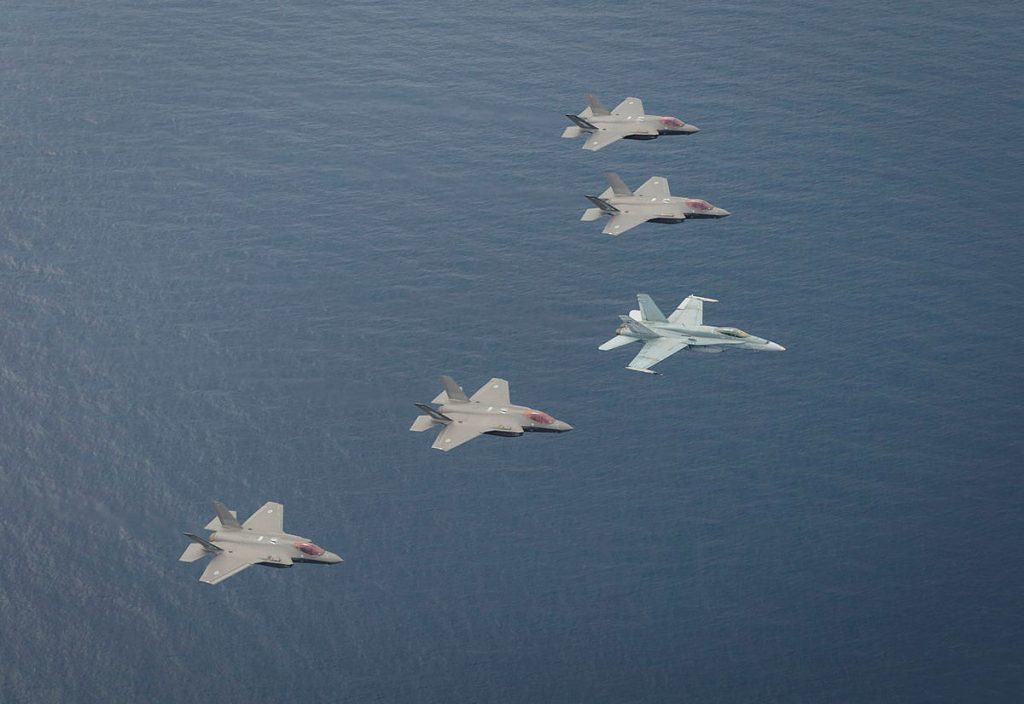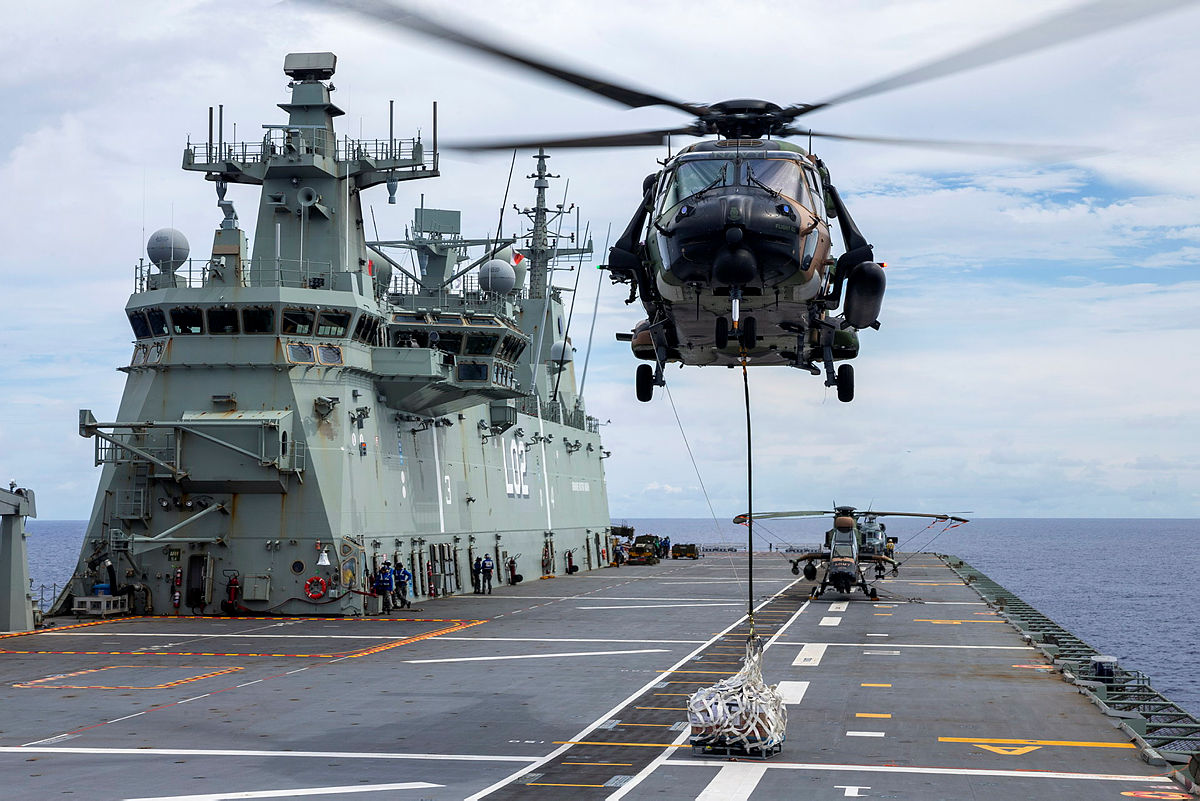Defence Budget
- Details
- Written by Katherine Ziesing
- Category: Defence Budget
 As readers are aware by now, government has managed to make good on its two per cent of GDP pledge with this year locking in a 2.1 per cent spending level for Defence from this week’s Budget. This is the bare minimum if the ambitious plans outlined in the 2016 Defence White Paper and 2020 Force Structure Review and Defence Strategic Update are to be delivered.
As readers are aware by now, government has managed to make good on its two per cent of GDP pledge with this year locking in a 2.1 per cent spending level for Defence from this week’s Budget. This is the bare minimum if the ambitious plans outlined in the 2016 Defence White Paper and 2020 Force Structure Review and Defence Strategic Update are to be delivered.
- Details
- Written by Eleanor Dickinson ARN
- Category: Defence Budget
 The federal government has handed over a raft of new investment for Australia’s digital services and technology sector as part of its Budget for 2021-2022. As previously announced, Treasurer Josh Frydenberg has earmarked $1.2 billion for the government's Digital Economy Strategy and $130.4 million for improved regional connectivity.
The federal government has handed over a raft of new investment for Australia’s digital services and technology sector as part of its Budget for 2021-2022. As previously announced, Treasurer Josh Frydenberg has earmarked $1.2 billion for the government's Digital Economy Strategy and $130.4 million for improved regional connectivity.
- Details
- Written by Marcus Hellyer
- Category: Defence Budget
 The 2021–22 budget was a ‘no surprises’ one for Defence. The government set out its plan in the 2016 white paper, reaffirmed it in last year’s defence strategic update and is now providing Defence with the funding it promised to deliver the plan. The size of the budget is as expected and that’s good news, but it’s how it can be spent to acquire more offensive firepower well before the 2030s that matters most. The budget tells us little new here.
The 2021–22 budget was a ‘no surprises’ one for Defence. The government set out its plan in the 2016 white paper, reaffirmed it in last year’s defence strategic update and is now providing Defence with the funding it promised to deliver the plan. The size of the budget is as expected and that’s good news, but it’s how it can be spent to acquire more offensive firepower well before the 2030s that matters most. The budget tells us little new here.
- Details
- Written by Riddhi Jain
- Category: Defence Budget
 Trending in the latest news, the 2020 federal budget is out and hundreds of millions of dollars are set to flow into IT. Government agencies will receive funding for a wide range of projects in this year’s budget that is largely dominated by the pandemic.
Trending in the latest news, the 2020 federal budget is out and hundreds of millions of dollars are set to flow into IT. Government agencies will receive funding for a wide range of projects in this year’s budget that is largely dominated by the pandemic.
Federal Budget 2020: All the Tech
Services Australia is set to receive a half a billion-dollar investment for completing its massive Centrelink IT overhaul, that began more than five years ago.
- Details
- Written by Marcus Hellyer
- Category: Defence Budget
 In its 2020–21 defence budget, the government hasn’t moved away from its funding commitment in the three months since it released the 2020 defence strategic update. And why would it? If you’re looking like being $213.7 billion in the red for the coming year, stiffing the defence portfolio of a few billion isn’t going to get the budget back in the black.
In its 2020–21 defence budget, the government hasn’t moved away from its funding commitment in the three months since it released the 2020 defence strategic update. And why would it? If you’re looking like being $213.7 billion in the red for the coming year, stiffing the defence portfolio of a few billion isn’t going to get the budget back in the black.
- Details
- Written by Cherelle Murphy & Bansi Madhavani
- Category: Defence Budget
 Australian defence spending rose sharply as a share of gross domestic spend (GDP) during the last century’s two world wars and to a lesser extent during the Korean and Vietnam wars. There were much smaller rises during the Iraq and Afghanistan conflicts. The recent low point was 2012-13, at about 1.6 per cent of GDP, in the aftermath of the global financial crisis.
Australian defence spending rose sharply as a share of gross domestic spend (GDP) during the last century’s two world wars and to a lesser extent during the Korean and Vietnam wars. There were much smaller rises during the Iraq and Afghanistan conflicts. The recent low point was 2012-13, at about 1.6 per cent of GDP, in the aftermath of the global financial crisis.
- Details
- Written by Stephen Dziedzic
- Category: Defence Budget
 It's a hawkish new strategy for an uncertain new world. On Wednesday, the Federal Government unveiled a significant shift in Australia's strategic posture that could reshape foreign and defence policy for years to come. The headlines about the Defence Strategic Update have focused on the big dollar figures and lethal new hardware being touted by the Coalition.
It's a hawkish new strategy for an uncertain new world. On Wednesday, the Federal Government unveiled a significant shift in Australia's strategic posture that could reshape foreign and defence policy for years to come. The headlines about the Defence Strategic Update have focused on the big dollar figures and lethal new hardware being touted by the Coalition.
- Details
- Written by Daniel McCulloch
- Category: Defence Budget
 Australia will spend another $270 billion on defence over the next decade to protect against China's rise and the fallout from the coronavirus. The country will for the first time be armed with long-range missiles as it adopts a more aggressive footing. Prime Minister Scott Morrison wants the Australian Defence Force to firmly focus its efforts on the Indo-Pacific.
Australia will spend another $270 billion on defence over the next decade to protect against China's rise and the fallout from the coronavirus. The country will for the first time be armed with long-range missiles as it adopts a more aggressive footing. Prime Minister Scott Morrison wants the Australian Defence Force to firmly focus its efforts on the Indo-Pacific.
- Details
- Written by Daniel McCulloch
- Category: Defence Budget
 Australia will meet its target to increase Defence spending ahead of schedule as it fends off cyber and security threats facing the country. Prime Minister Scott Morrison has long promised to lift the Defence budget to two per cent of gross domestic product in the 2020/21 financial year. Describing his government as one of the biggest defence spenders in the nation's peacetime history, Mr Morrison confirmed Australia would meet the mark.
Australia will meet its target to increase Defence spending ahead of schedule as it fends off cyber and security threats facing the country. Prime Minister Scott Morrison has long promised to lift the Defence budget to two per cent of gross domestic product in the 2020/21 financial year. Describing his government as one of the biggest defence spenders in the nation's peacetime history, Mr Morrison confirmed Australia would meet the mark.


